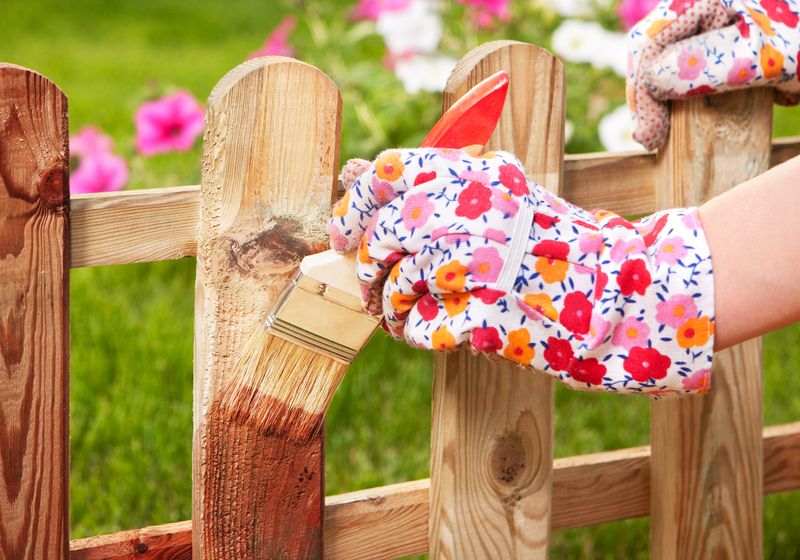7 Lawn Care Tips for a Lush, Vibrant Yard
Posted on 22/05/2025
A lush, vibrant yard is more than just a patch of green; it's a testament to your dedication and the aesthetic appeal of your home. Achieving and maintaining a picture-perfect lawn requires a blend of proper techniques, timing, and the right tools. Here are seven essential lawn care tips to help you cultivate an enviable yard.
1. Mow at the Right Height
One of the simplest yet most effective lawn care practices is mowing your grass to the appropriate height. Different grass types have different optimal mowing heights, but a general rule of thumb is to cut no more than one-third of the grass blade in one mowing session. This prevents stress on the grass and encourages deeper root growth, resulting in healthier turf.

2. Water Deeply and Infrequently
Instead of a shallow, daily watering routine, water your lawn deeply but less frequently. This encourages the grass roots to grow deeper into the soil, making your lawn more drought-resistant. Aim to water in the early morning to reduce evaporation and fungal growth, and ensure your lawn gets about 1 to 1.5 inches of water per week.
3. Aerate the Soil
Aeration involves poking small holes in the soil to allow air, water, and nutrients to penetrate the grass roots. It's particularly useful in compacted or clay-heavy soils where grass struggles to thrive. Aerate your lawn once or twice a year, ideally in the spring or fall, to promote healthier root development and a more robust lawn.
4. Fertilize Seasonally
A balanced fertilization plan tailored to the specific needs of your grass type can make a significant difference in lawn health. Use a slow-release fertilizer to provide a consistent nutrient supply, and follow a seasonal schedule. Typically, fertilization is most effective in the spring and fall when grass growth is most active.
5. Control Weeds
Weeds can quickly take over an otherwise healthy lawn. Prevent this by applying a pre-emergent herbicide in early spring to stop weed seeds from germinating. For established weeds, use a post-emergent herbicide or manually remove them. Maintaining a thick, healthy lawn also naturally suppresses weed growth by limiting the space and nutrients available to weeds.
6. Address Pest Problems Promptly
Pests like grubs, chinch bugs, and other lawn insects can cause significant damage to your yard. Regularly inspect your lawn for signs of pest activity, such as dead patches or unusual browning. Use appropriate pest control treatments to mitigate the problem before it spreads extensively.
7. Overseed for a Thicker Lawn
Overseeding involves spreading grass seed over your existing lawn to fill in thin or bare spots. This not only improves the thickness of your lawn but also introduces new, resilient grass varieties that can better withstand diseases and harsh conditions. For best results, overseed in the fall or early spring when the soil is still warm, and the competition from weeds is low.
Pros and Cons
Lawn care can be a fulfilling but challenging endeavor. To help you weigh the benefits and potential drawbacks, here are some pros and cons:
Pros
- Improves Curb Appeal: A well-maintained lawn significantly enhances the aesthetic look of your home.
- Boosts Property Value: Homes with attractive lawns can fetch higher market values.
- Environmental Benefits: Healthy lawns can absorb carbon dioxide and release oxygen, contributing to better air quality.
- Recreational Space: Provides a comfortable area for outdoor activities and family gatherings.
Cons
- Time-Consuming: Proper lawn care routine requires regular attention and effort.
- Cost: Expenses for fertilizers, seeds, tools, and pest control can add up.
- Environmental Concerns: Overuse of chemicals and water can have detrimental effects on the environment.
- Physical Labor: Lawn care involves physical tasks that can be strenuous, especially for older or less physically mobile individuals.
Tips to Remember
- Mow at the right height and frequency.
- Water deeply but infrequently.
- Aerate your soil regularly.
- Fertilize seasonally with the appropriate products.
- Control weeds to prevent infestation.
- Inspect and treat pest problems promptly.
- Overseed to maintain lawn density.
Takeaways
Maintaining a lush, vibrant yard is achievable with the right techniques and consistent effort. By following these seven lawn care tips, you can enhance your lawn's health, appearance, and value. Remember, the key to a beautiful yard lies in understanding the unique needs of your grass type and addressing challenges promptly and effectively.

Conclusion
A well-kept lawn serves as a beautiful backdrop for your home and provides numerous benefits. From mowing and watering practices to fertilization and pest control, each step plays a crucial role in lawn care. While it requires time and effort, the payoff is a lush, vibrant yard that you can be proud of year-round.
Direct Answer
To achieve a lush, vibrant yard, follow these seven essential lawn care tips: mow at the right height, water deeply and infrequently, aerate the soil, fertilize seasonally, control weeds, address pest problems promptly, and overseed for a thicker lawn.




